Thanks for the tip, I should do this before I go to bed, I always struggle with it
How to Safely Relieve Tension From 5 Joints in Your Body
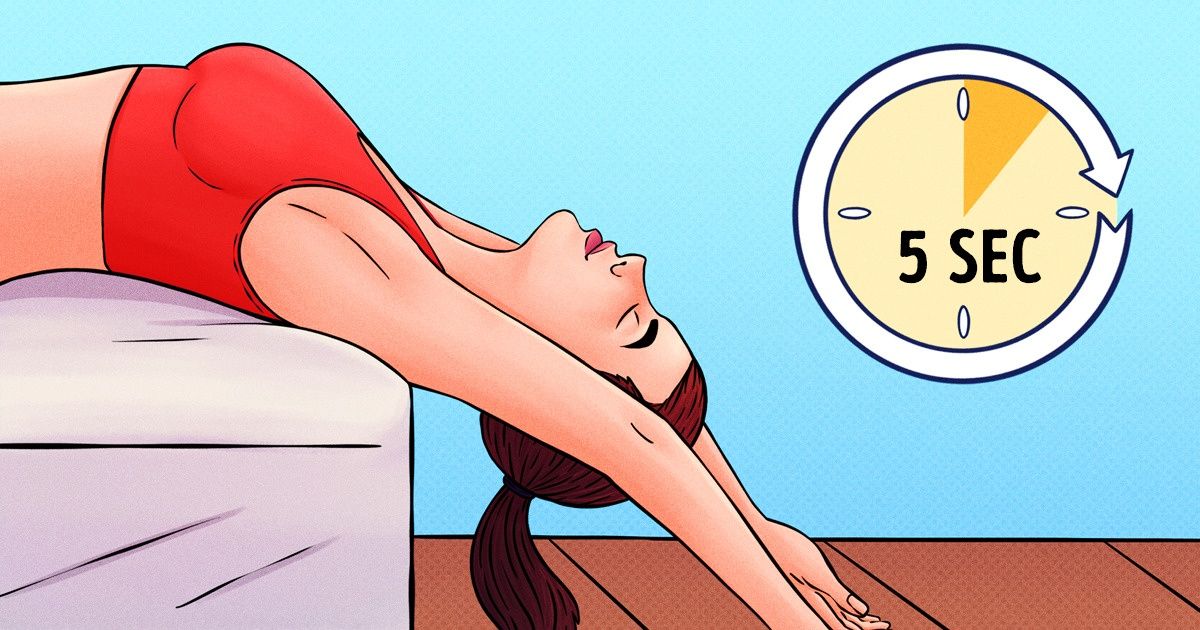
The human body is designed to experience stress and react to it. So, it’s normal to feel tension in different body parts, like the neck or back, for example. It can affect our mood, which is why it’s crucial to relax. And you can even do it at home or at work by doing simple exercises.
We at Bright Side also experience tension in our joints sometimes and would like to share with you some simple techniques that can help you feel better.
1. How to relieve tension in your neck safely
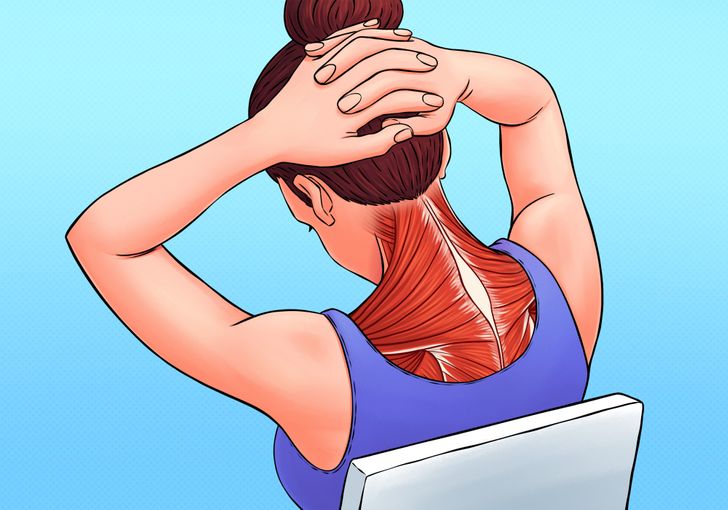
To relieve tension in your neck, you can try to perform this self-stretch that won’t take up much of your time. It can be done while standing or sitting.
- Find the 2 prominent bony bumps at the back of your skull.
- Interlace your fingers and place them at this prominent point, like shown in the picture. Start gently squeezing your hands around the base of your skull. Push your head with your hands and raise your elbows. You can tilt your chin toward your chest.
- Stay in this position for 30 seconds.
- Repeat 3-5 times and then gently release your hands from your head.
2. How to relieve tension in your shoulders
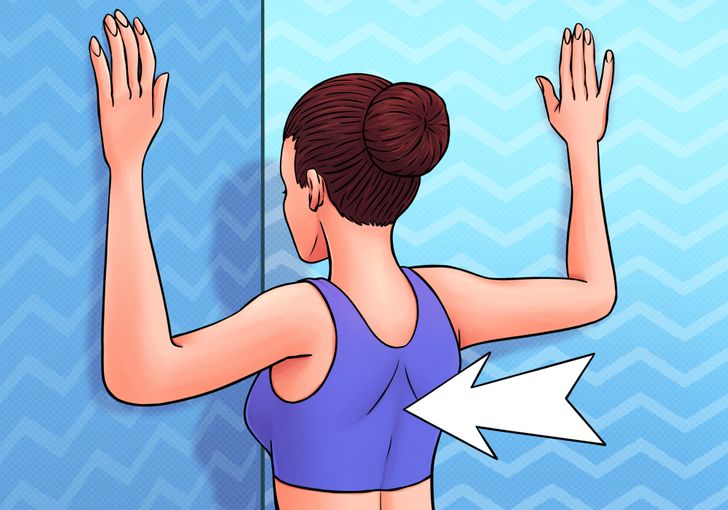
Relieving tension in your chest and your shoulders can help you to reduce tension in your neck as well, because these body parts are interconnected. Use a wall to do safe stretching.
- Stand approximately 2 ft (0.6 m) back from a corner in the room, while facing the corner.
- Place your feet together.
- Both forearms should be on each wall. Your elbows should be a little below shoulder height.
- Start leaning gently. Lean in as far as possible, but remember, you shouldn’t feel pain. If you feel pain, stop the exercise.
- Stay in this position for about 30 seconds to a minute.
3. How to relieve tension in your lower back safely
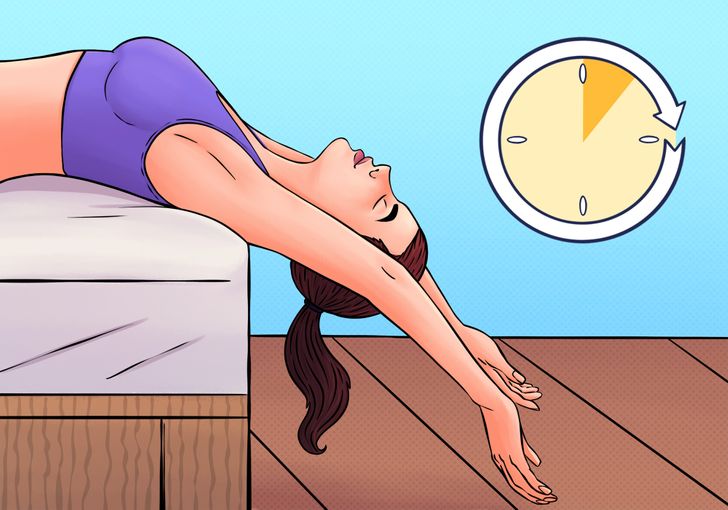
To relieve tension in your lower back, stretch it over the edge of your bed so your head can go below the level of your spine. Don’t do this stretch if you have any injuries to your spine.
- Lie down on your back. Your shoulder blades should be extended over the edge of the bed and your head should be below the level of your bed, like shown in the picture.
- Relax your back. Start gently extending your hands toward the floor. Breathe slowly.
- After each extending motion, hold for about 5 seconds. Then go back to the original position and take a full breath in. Do as many repetitions as you need.
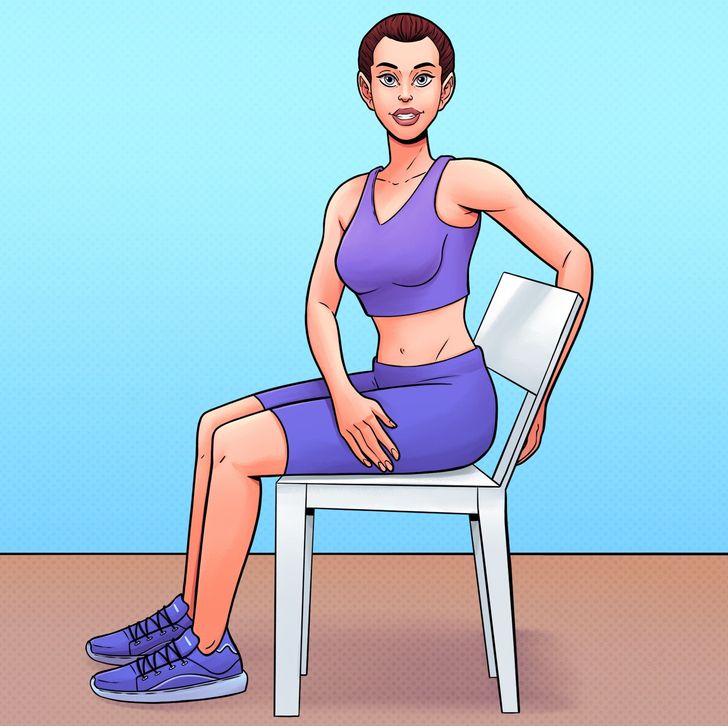
One more exercise that can help your lower back is a twist. You will need a chair for this.
- Sit down in the chair with your back straight. Bring your left leg a little bit over your right leg.
- Put your right elbow on your left knee.
- Start slowly rotating your upper body to the left.
- Hold this position for 10 seconds.
- Now, return to your starting position.
- Repeat this exercise with your right leg over your leg, turning to the opposite side.
4. How to relieve tension in your upper back safely
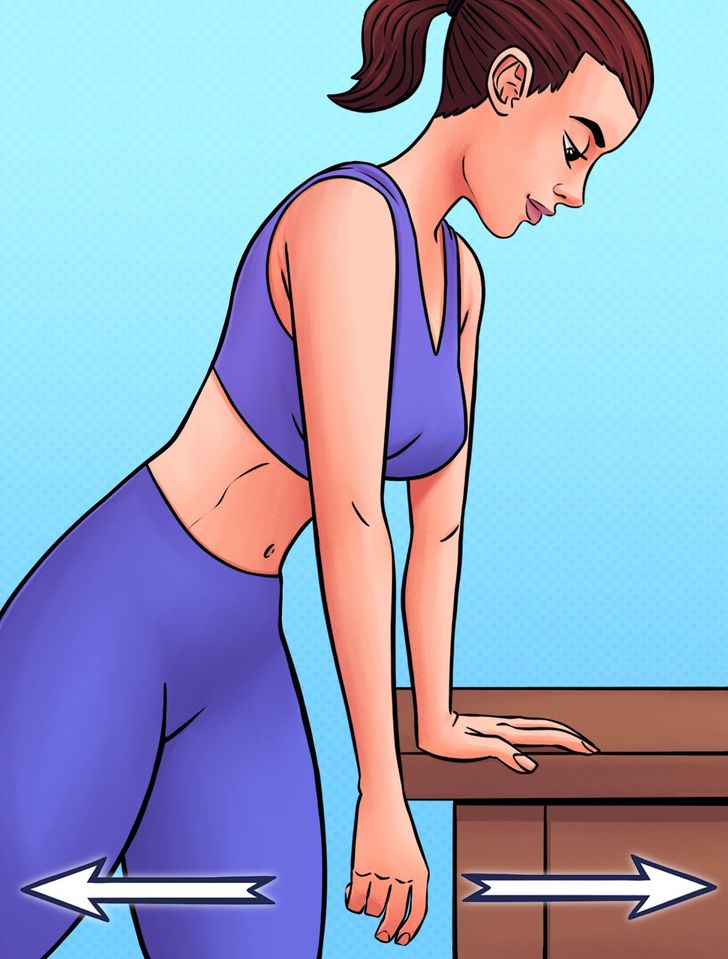
To get rid of stiff shoulders, do this exercise first. You’ll need a table to do it.
- Place one hand on the table to stabilize yourself. Relax your shoulders. The other arm should hang toward the floor. Swing it in a small circle, about a foot (30 cm) in diameter.
- Perform 10 revolutions in each direction, once a day.
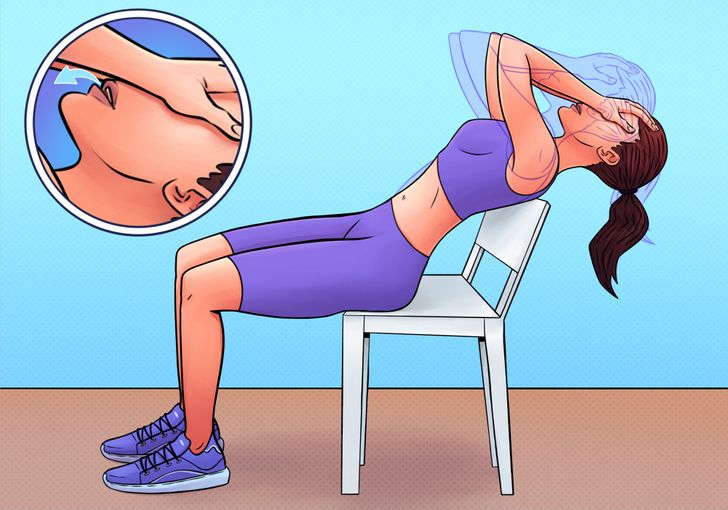
A back-of-the-chair stretch can be the optimal choice to reduce tension in your muscles and joints at home or at work. You should use a chair with a short back to perform this exercise. Put a towel on it, if you want, to make it more comfortable for yourself.
- Place your palms on your forehead and exhale slowly.
- Your head and shoulders should sink down behind the chair.
- Do not lean back if it feels uncomfortable to you or if it hurts you.
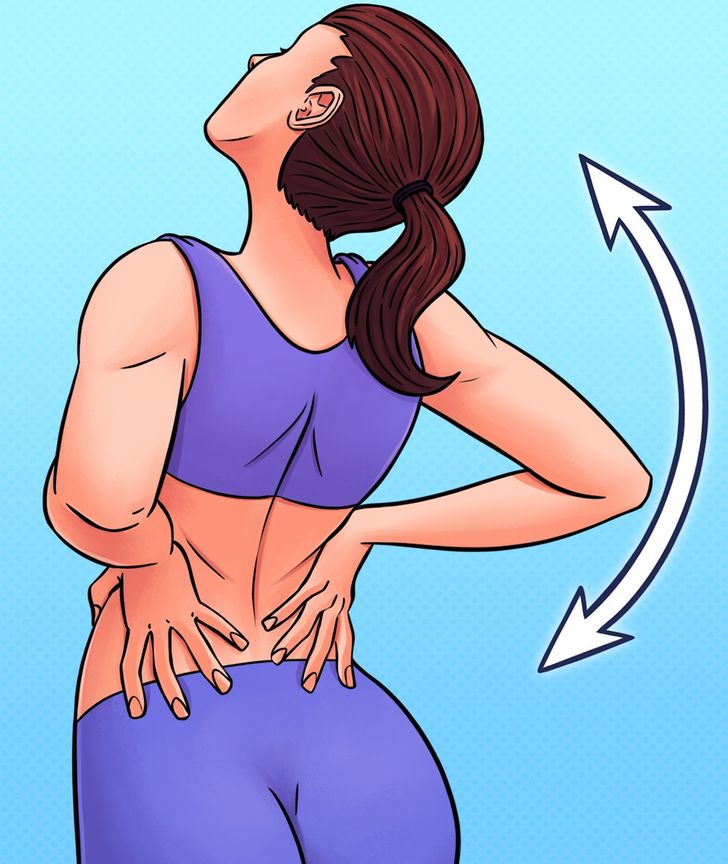
A back extension while standing is easy and safe to perform, but you need to be careful if you have any spinal problems. It will stretch along your spine and make you feel better in your upper back after long periods of sitting.
- While standing, place your palms onto your lower back. All of your fingers should point down, while your pinky fingers should be placed on either side of your spine.
- Now start making an arch with your spine. Lean backward, like shown in the picture. Apply slight pressure to your back by pushing it with your palms. You may feel a crack between your shoulder blades.
- Breathe. Hold the position for 10 to 20 seconds.
5. How to relieve tension in your knuckles
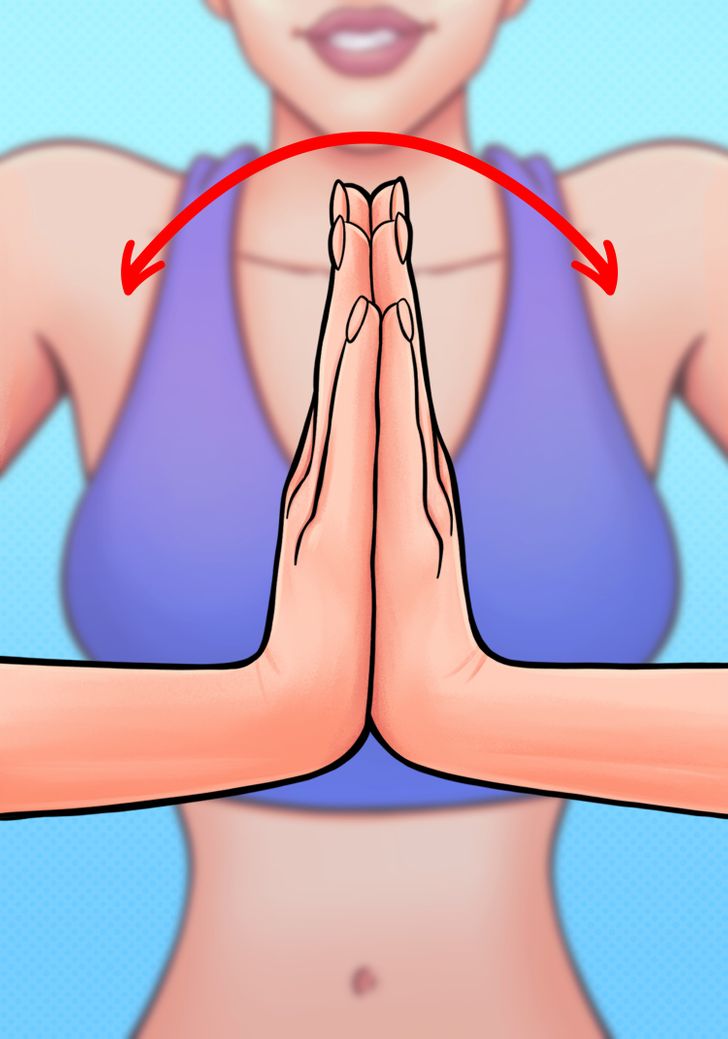
Finger fitness is excellent for improving the overall condition of your hands. It’s especially good for musicians to do to develop their abilities or for people who don’t have enough hand mobility.
- Put your hands together like you’re clapping, similar to a prayer position.
- Then move all of your fingers to the left and then to the right.
- Make sure that you’re not using your wrists.
- Keep doing this as much as you need.
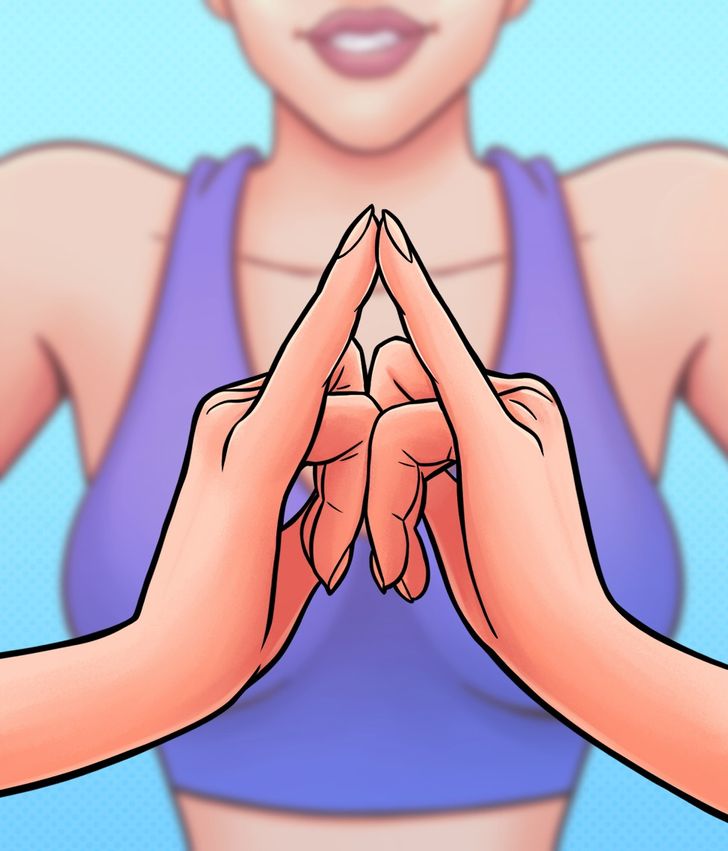
Yoga is the perfect exercise, and it’s not just for your state of mind, but also to relieve tension from your body. Try the Mahamayuri Mudra position. It is a beginner level yoga pose that is performed in a seated position. You can connect this pose with a brief meditation.
- Connect your pinky fingers.
- Keep your right thumb over your left thumb and then interlace all of your fingers, except your pinky fingers.
- Leave the pinky fingers straight up, touching each other. Stay like this for as long as you’d like.
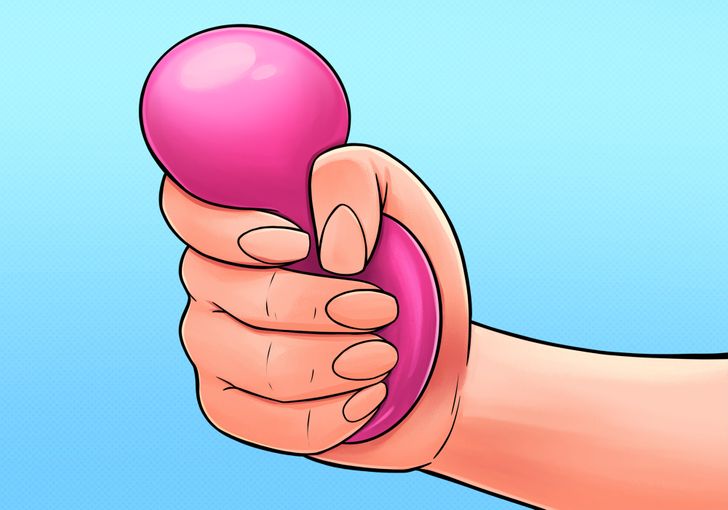
Get an exercise ball for your hands and fingers. As a basic exercise you can do this:
- Hold the ball in your palm. Start squeezing it as hard as you can.
- Hold for a few seconds, then release.
- Repeat 10 to 15 times on each hand. Don’t do this exercise if your thumb joint is damaged.
Bonus: The “placebo effect” of cracking your neck
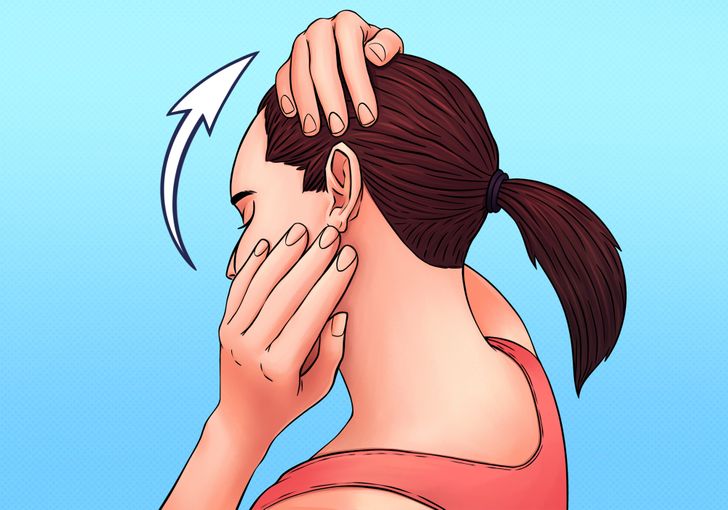
A study has shown that cracking your neck can have a positive mental effect on you. This happens because many people associate cracking sounds with the successful adjustment of a joint. But in actuality no pressure is released. This effect is called a “placebo effect.”
Cracking your neck can be harmful if you don’t do it correctly or if you do it too often. To avoid any negative consequences with any joints, consult with your doctor first.
How tense do you feel in your joints and muscles now? What do you do to relax your body?
Comments
Thanks, will save this article for later!
Good tutorial, was looking for something like this actually, will save it!
YESSS
Related Reads
15 Stories That Remind Us to Stay Kind, Even When the World Isn’t

15+ Heartfelt Times When Women Proved There’s a Rainbow After Every Storm

10 Stories That Remind Us to Stay Kind, Even When Life Tries to Break Us

20+ Moments That Remind Us That Kindness Costs Nothing but Means Everything

I Refuse to Let My Sister Step Inside the Home I Bought for Our Parents — and I’m Not Sorry
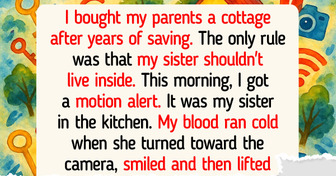
I Refuse to Be a Free Slave in My Mom’s Business, Just Because We’re Family

15 Stories That Prove a Small Spark of Kindness Can Light Up a Fading Soul

I Refuse to Let My Sick MIL Live With Us—I’m Not Her Free Caregiver

10 People Who Saw Their Coworkers’ True Colors Before It Was Too Late
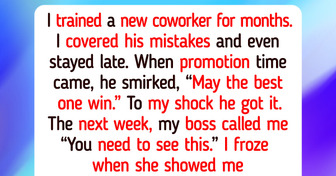
12 Stepparents Who Cracked the Code to Their Stepchildren’s Hearts

I Refuse to Let My MIL See My Kids After She Crossed a Serious Line

12 Quiet Acts of Kindness That Show Humanity Still Has a Heartbeat
